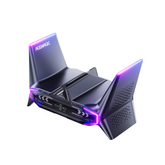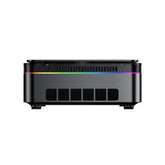Is 16GB RAM Enough for Gaming in 2025? The Truth You Need to Know

At 2025, 16GB of RAM is still the mass market leader for hard-core gamers who are looking for smooth, even performance at 1080p and 1440p. Whether you are playing high-speed shooters or deep RPGs, 16GB provides enough headroom for most scenarios if coupled with a good CPU and GPU.
Frame rates are controlled by your processor and graphics card, but system memory takes the blame for smooth transitioning, fast loading of assets, and stutters that do not happen—especially in open-world and high-detail games.
With 16GB, background tasks like game launchers, drivers, and voice chat programs can coexist without taking away from core game performance. However, memory usage typically tops 12GB during heavy scenes, with little buffer space remaining for multitasking or newer, unoptimized games.
Which Games Will Begin to Suffer Without Additional RAM?
While 16GB is good enough for now, certain modern titles like playing games at ultra settings or heavy resource-demanding overlays, mods, or background applications are already exposing its limits.
Here is a convenient reference table of minimum and recommended RAM requirements of some games:
| Game Title | Minimum RAM | Recommended RAM |
|---|---|---|
| Cyberpunk 2077 | 8GB | 16GB |
| Call of Duty: Warzone | 12GB | 16GB+ |
| Baldur's Gate 3 | 8GB | 16GB+ |
| Fortnite | 8GB | 16GB |
| Valorant | 4GB | 8GB |
| Red Dead Redemption 2 | 8GB | 16GB |
| Hogwarts Legacy | 16GB | 32GB (Ultra settings w/ RT) |
As can be seen from the table, 16GB has the minimum or above specs needed for the majority of today's games, but some of the advanced configurations (e.g., ultra textures, ray tracing) may utilize 32GB to avoid system pressure.
Benchmark Comparison: 8GB vs 16GB vs 32GB
The biggest performance boost in gaming is getting from 8GB to 16GB. This upgrade eliminates nagging slowdowns, reduces game crashes, and supports multitasking. From 16GB to 32GB, however, delivers only minor frame rate increases unless you're running multiple high-memory apps concurrently with your game.
| RAM Size | Average FPS (AAA titles) | System Responsiveness | Multitasking Stability |
|---|---|---|---|
| 8GB | 50–65 (some stutter) | Sluggish | Limited |
| 16GB | 70–90 (stable) | Smooth | Moderate multitasking |
| 32GB | 72–95 (very stable) | Ultra-smooth | Excellent |
Verdict: For gaming purposes alone, 16GB is the optimal value-to-performance. The actual performance gain from 32GB is for streaming, content creation, and forward compatibility.
RAM Speed and Dual Channel Setup: Do They Matter?
Yes—speed and channel setup both make a huge impact on gaming smoothness, especially in CPU-bound titles.
- RAM Speed: Faster memory (e.g., DDR4-3600 or DDR5-5600) reduces latency and boosts data transfer speeds, leading to smoother asset loading.
- Dual Channel: Two similar RAM sticks double the bandwidth, which can result in up to 15% better performance in certain games compared to single-channel setups.
You're missing out if you're only using one stick of RAM. Dual-channel 2×8GB is much better than using a single 16GB stick for gaming.
Multitasking While Gaming: Where 16GB May Reach Its Limits
Modern gamers usually have something more than a game left in the background—Discord, music, game launchers, and web browsers. They all compete for memory. As a sample:
- Chrome with numerous tabs: ~2GB RAM
- Discord voice/chat: ~500MB
- Game launcher + anti-cheat program: ~1GB
Together with a demanding game, this can push RAM usage into the 14–15GB range—leaving little room for error. While the system won't crash, it may resort to virtual memory (paging), which introduces latency and stuttering, especially if your SSD isn’t top-tier.
Game Settings That Affect RAM Usage the Most
Optimizing in-game settings is key when working with a fixed memory budget. Some options have a disproportionately large impact on RAM usage:
| Setting | RAM Load Impact | Recommendation |
|---|---|---|
| Texture Quality | High | Lower to High from Ultra |
| Shadow Resolution | Moderate | Medium or High |
| View Distance | High | Medium for balance |
| Ray Tracing | Low (GPU heavy) | Disable if not needed |
| Post-Processing Effects | Low | Can be left high |
Reducing these settings frees up 2–3GB of RAM, which makes the game run smoother even on heavy games.
Is It Worth Upgrading to 32GB Now?
It depends on how you use your PC.
Upgrade if you:
- Play modded games or sandbox games like Skyrim or Cities: Skylines
- Stream or record gameplay regularly
- Run Chrome, OBS, Discord, Spotify, and other tools while gaming
- Use your PC for video editing, 3D modeling, or rendering
If you’re a typical gamer who plays one game at a time, sticks to popular titles, and closes background tasks, 16GB is enough for at least the next couple of years.
Will RAM Requirements Keep Rising in the Next Few Years?
Yes, but incrementally.
New game engines, better AI engines, ray tracing pipelines, and huge environments all push more memory needs, especially with high levels. However, most game developers still target hardware parity with the consoles, which consist of the majority having 16GB unified memory.
So although 32GB may become standard in 2026 or beyond for ultra settings, 16GB will remain sufficient for the majority of mainstream and competitive gaming for the foreseeable future.
How to Monitor and Optimize RAM Utilization for Games
RAM monitoring helps you troubleshoot bottlenecks:
Tools to use:
- Windows Task Manager: In-game snapshot (Ctrl + Shift + Esc)
- MSI Afterburner + RivaTuner: In-game display
- HWInfo: Comprehensive memory diagnostics
Optimization tips:
- Close browser tabs prior to playing games
- Disable auto-startup applications (use Task Manager's "Startup" tab)
- Turn on Windows Game Mode
- Employ a static pagefile size to prevent disk thrashing
FAQs Regarding 16GB RAM for Gaming
Q1: Will 16GB affect FPS in games?
No, not so much. But when RAM is filled, it can lead to stutters or texture pop-ins that feel like performance drops.
Q2: Is dual-channel memory important?
Yes. It has a huge impact on memory bandwidth, which translates to smoother and more consistent gaming performance.
Q3: Is 16GB enough for gaming and streaming?
Yes, for light streaming. For quality streams with many overlays and chatbots, 32GB is better.
Q4: Will 16GB be enough by 2026?
Yes, to run most games at high settings. But you may need to reduce some graphics settings or close more background programs.
Q5: Do I upgrade RAM or GPU first?
Upgrade the GPU first—unless you're operating with less than 16GB or single stick (single-channel installation).
Q6: What are the most significant RAM settings?
Texture quality, view distance, and AI behavior. These settings cache heavy assets in RAM when playing.
Conclusion – Is 16GB RAM Still the Intelligent Gamers' Choice in 2025?
If you're building or upgrading a gaming PC in 2025, 16GB of RAM is an established, cost-effective minimum. It provides buttery-smooth performance in all but the most stressing current titles, manages light multitasking with ease, and fits comfortably into mid-range budgets.
However, ensure you're putting in dual-channel RAM at a decent frequency, and monitor your background usage for the best experience. For power users, streamers, or anyone who wishes to future-proof, a move to 32GB is worth it.
Bottom line: For the vast majority of gamers today, 16GB is enough. Smart configuration beats raw capacity.







Leave a comment
Please note, comments need to be approved before they are published.